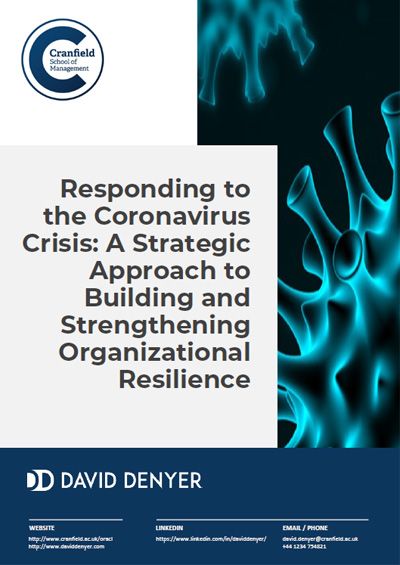Key Facts
- The COVID-19 situation has moved so fast that many people, organizations, and governments blinked and failed to see it coming. The speed of the response needs to match the speed of the situation.
- In a crisis, solutions can't be objectively judged as right or wrong, just better or worse.
- As leaders, we are making complex decisions daily to keep our workforces and communities safe, while also moving our businesses forward.
- No matter what the context, leading resilience is about putting yourself in the shoes of all stakeholders to understand how disruption could cause harm. It is about reducing the number of people affected by disruption (e.g., to the provision of an essential service) with a specific focus on protecting people in vulnerable situations.
- It is about investing in and designing resilience to ensure the secure, safe, and sustainable functioning of critical systems and services for all - creating a bedrock for wellbeing and prosperity.
Impact of our research
- Responding to COVID-19 will require leaders to be both defensive AND progressive and also consistent AND flexible. These two dimensions form an integral part of a framework, which we have termed the Strategic Tensions Quadrants Model.
- Organizations often become preoccupied with preventative control when the organization feels the threat of crisis (Figure 2). They tend to control expenditure and resources, layoff staff and focus on the one thing they do well (e.g. their core product or service).
Why the research was commissioned
We are firmly in the grip of the Coronavirus crisis and have all retrenched into defensive mode, but ‘waiting out the storm’ is not an option in the medium term. Leaders must face the paradox of embracing risk and innovation if they are to succeed. Doing so requires them to prepare their businesses to react to opportunities as well as threats, adapting to not only survive but also prosper.

